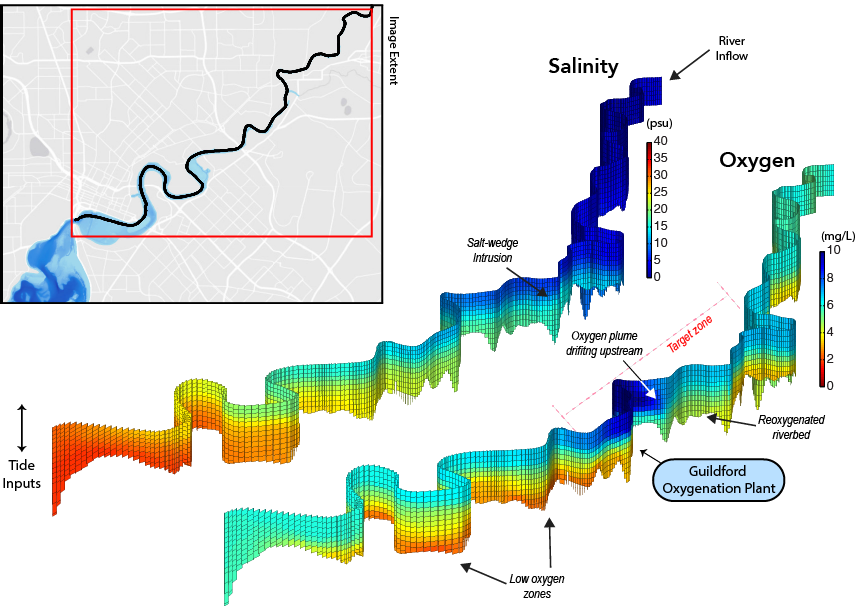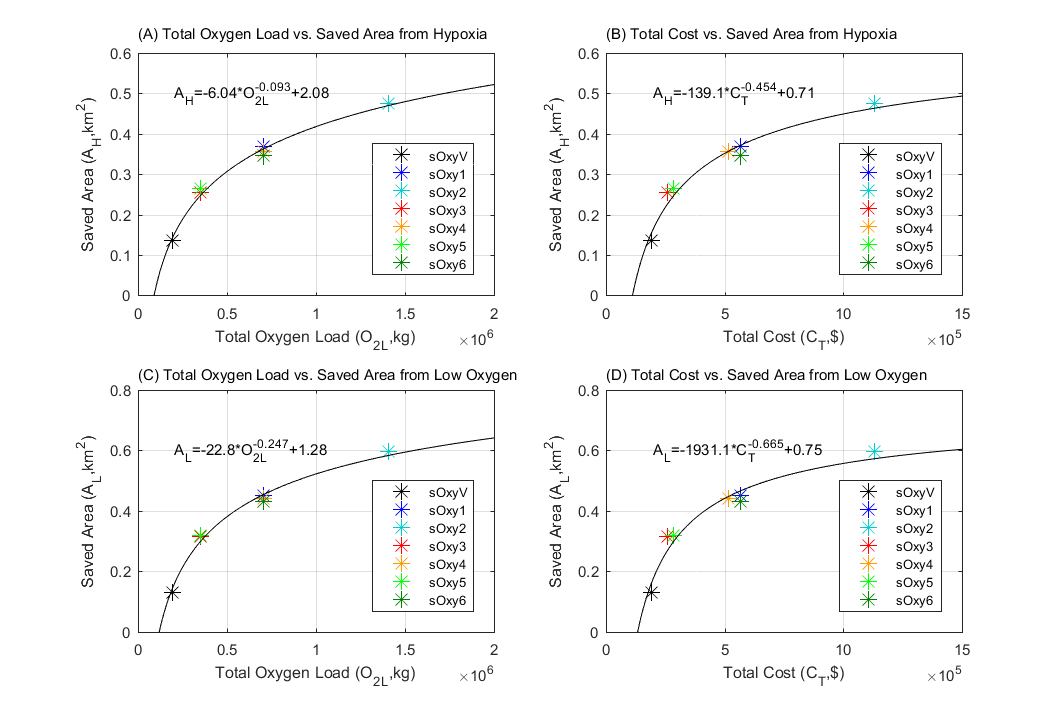
Like many other urban waterways around the world, the Swan-Canning estuary is showing visible signs of stress. Land-uses within the catchment contribute nutrients and organic matter to the estuary, and symptoms of poor health are present - such as algal blooms and low oxygen waters. The climate of south-west Western Australia has been consistently drying over the last 30 years and less rainfall results in less streamflow. Reduced streamflow delivers water with higher nutrient concentrations and these nutrients and organic matter are retained in the estuarine system rather than being flushed out to sea. Low oxygen in the upper Swan and Canning rivers is a now a persistent management challenge, with detrimental effects on estuarine biodiversity and the overall amenity and health of the river. The WA State Government has invested in artificial oxygenation since 2010.
This research summarises a research study to build coupled hydrodynamic-biogeochemical models for the artificially oxygenated zones in the Swan and Canning Rivers. These models aimed to integrate the substantial data sets that have been collected on water and sediment quality in the rivers since the introduction of the oxygenation plants, and provide a predictive tool for management.
The model was used to demonstrate the area of low oxygen (hypoxia) that can be achieved through different amounts of oxygen input (see Figure below).
Click the below links for further information about the artificial oxygenation assessment:
Summary report: Modelling the effectiveness of artificial oxygenation in the Swan-Canning estuaryResearch paper: Assessing artificial oxygenation in a riverine salt-wedge estuary with a three-dimensional finite-volume model
See also: Artificially oxygenating the Swan River estuary increases dissolved oxygen concentrations in the water and at the sediment interface
Contact: Peisheng Huang


